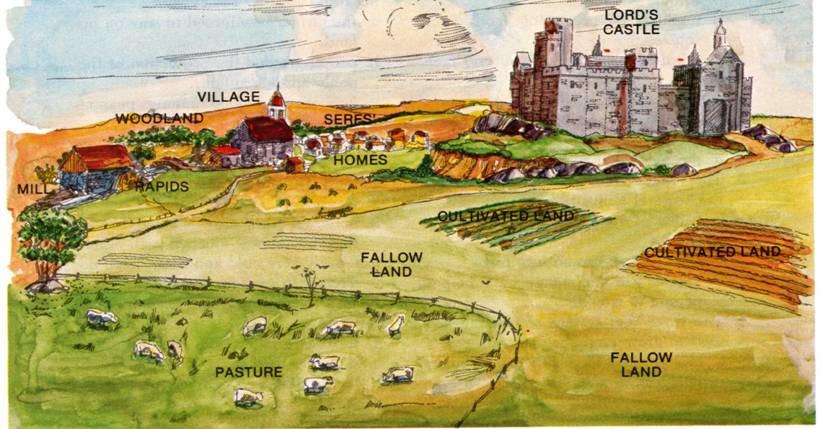

There was a yearly payment called "head money" with a certain amount per person. However, in return for their labor, they received their own small land to farm and place to live.Īlong with the labor the peasants had to perform, peasants and serfs also could owe the lord countless taxes. Unfree peasants, also called serfs, farmed the lords' fields and weren't allowed to leave the lords' manor.
Feudalism in the middle ages europe free#
Free peasants rented land to farm and owed only their rent to the lord. There were two kinds of peasants: free and unfree. They also were not allowed to marry without the permission of their lords. During the 11th century (1000s A.D), however, feudal life began to change. Their labor freed lords and knights to spend their time preparing of war or fighting. In medieval Europe, rural life was governed by a system scholars call feudalism. Though they didn't have a relationship like vassals and lords, they were necessary in the entire feudal structure by helping work out the land. Since most people in the Middle Ages were peasants, peasants formed the majority of the feudal system. Except for fighting, ladies basically had the duties that the lords had. However, it wasn't uncommon for noblewomen to hold fiefs and inherit land. However, ladies had a strong role in the feudal relationship as well. Theoretically, only men were part of the feudal relationship between lord and vassals. These fiefs were like promises between vassal and lord which linked them together - if a vassal did not keep to his promises - then the vassal's land was taken away. Lords had an important job of leasing out the land they had received from their monarch, also called fiefs, to their vassals. They had to pay taxes and fees to the king if he needed them.They had to provide food and other necessities to the king.They had to provide the King with knights to defeat any kind of war.In return of the land the lords got from their king, they were given certain responsibilities and roles in order for the feudal system to work out: Some lords held posts in the king's government and assisted the king in acting as the advisory. The lord appointed officials to make sure villagers and peasants carried out their duties, such as farming his land and paying rent in the form of crops and other foods. It was the lord's job to manage and defend his land and the people who worked it. It helped shape world history as a whole, by giving rise to early forms of representative government. Its significance goes far beyond its role in a few centuries in the European Middle Ages, however.
/budapest-during-the-middle-ages-from-the-nuremberg-chronicle-1493-hungary-58c95ee75f9b58af5c78065d.jpg)

Lords, also called the Lord of the Manor, were members of the nobility, known as the highest class in the medieval society. The term feudal system is used by historians to describe a social-political structure which was a key feature of medieval Europe.


 0 kommentar(er)
0 kommentar(er)
